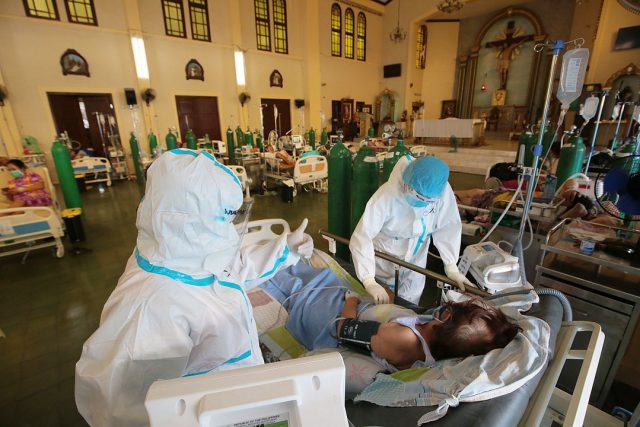
THE Philippines appears to be showing more signs of “economic scarring” due to the prolonged pandemic, making it more crucial for the government to ramp up fiscal spending, an economist said.
“What is clear is that the economy, almost lifeless and close to failure, is in need of all the help it can get from both sides of the whole of government approach,” ING Bank N.V. Manila Senior Economist Nicholas Antonio T. Mapa said in a note.
He now expects the country’s gross domestic product (GDP) to grow by 3.8% in 2021, below the government’s 4-5% full-year target.
Mr. Mapa said economic scarring is already evident amid the sluggish investment environment.
“For example, the pandemic and the recession that followed it, have sapped investment momentum (that) suggests that potential output is now stunted as investments in capital machinery have been mothballed. In the near and medium term, our capability to produce and innovate will be lowered, with the lost production and capacity a clear scar from the pandemic,” he said.
The economy exited the recession with a growth of 11.8% in the second quarter, mainly due to base effects. Its investment component or capital formation rose 75.5% year on year, still reflecting the low base from the 51.5% contraction logged in the same period in 2020.
Mr. Mapa said the prolonged closure of schools and shift to online learning will have an impact on the country’s future workforce.
“Students will likely be less productive now and into the future, just another clear evidence of scarring,” he said.
Last month, the United Nations Children’s Fund (UNICEF) warned about the impact of the pandemic on children’s learning, noting the Philippines is among five countries in the world that have yet to resume physical classes since the pandemic.
As the pandemic drags on, this has also affected overall consumer confidence. Household spending is a vital component of the economy as it makes up about 70% of GDP.
“Filipinos are now aware that the jobs that were available in the past are no longer available. This will constrain spending behavior in the near and medium term as Filipinos will now look to rebuild savings and be more circumspect in the purchases,” Mr. Mapa said.
Household spending in the second quarter rose 7.2% year on year after shrinking by 15% in the April to June 2020 period.
Against this backdrop, Mr. Mapa stressed the need for additional fiscal spending.
“Calls for additional fiscal spending have come and gone with authorities opting for a strategy of fiscal prudence as opposed to fiscal stimulus. Time will tell whether such a [fiscal prudence] strategy was successful but so far, the fruits of this choice appear to be an extended recession and a delayed full economic recovery,” Mr. Mapa said.
For 2021, the government has capped the fiscal deficit at 9.3% of GDP.
Legislators have been pushing for a third stimulus package worth up to P400 billion. While Bayanihan III has been approved by the House of Representatives, it is still pending at the Senate. — Luz Wendy T. Noble
‘Almost lifeless’ economy needs more stimulus
Source: Bantay Radio
0 Comments